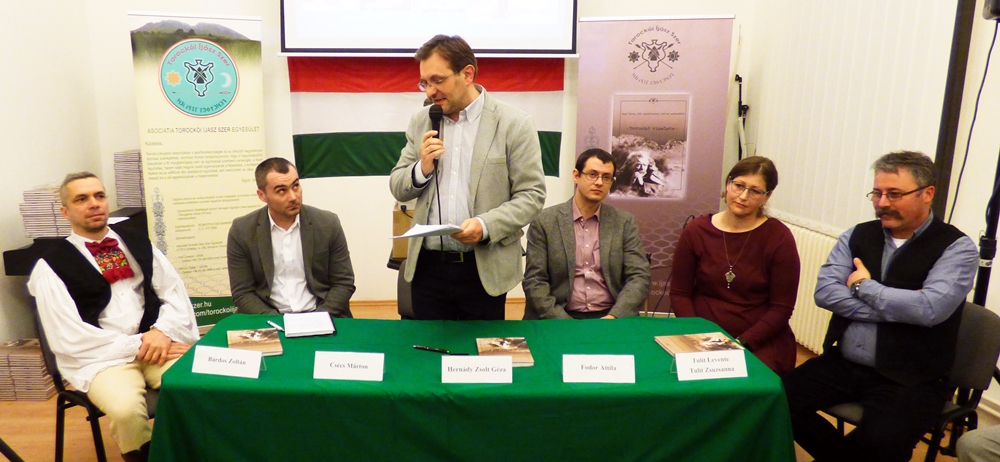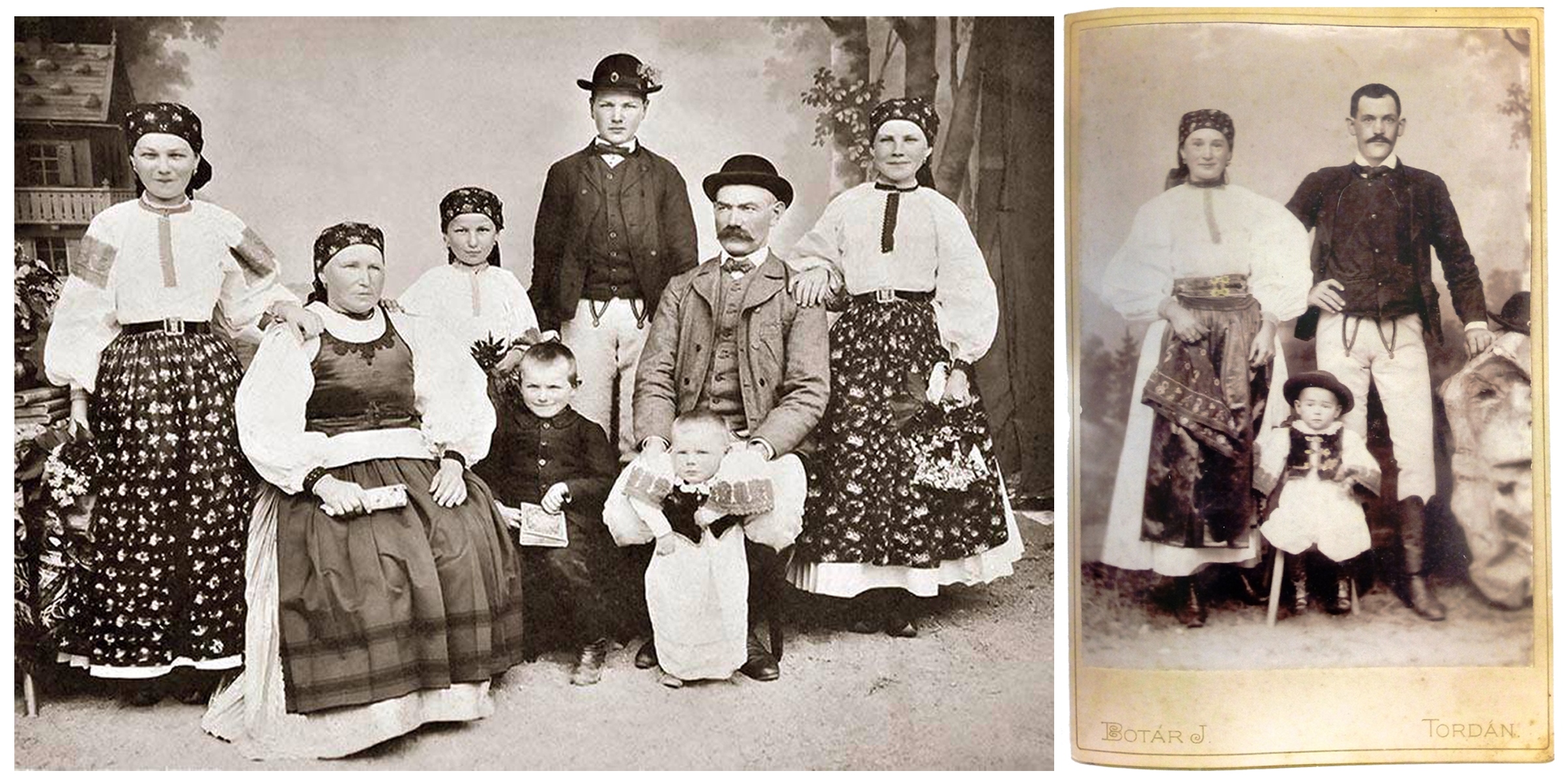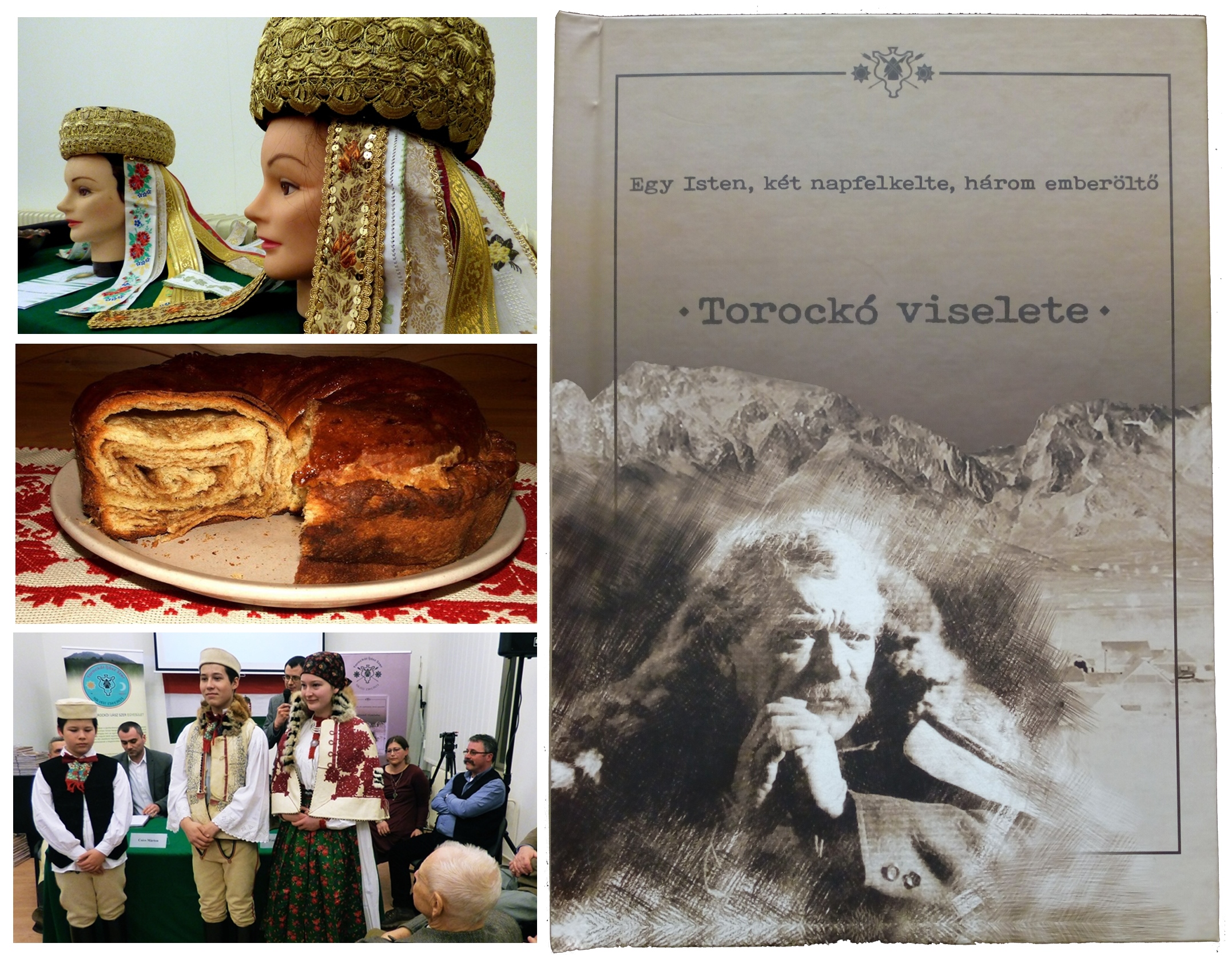Ethnographer Attila Fodor – accompanied by other contributors – introduced his freshly published book about the unique folk costumes of Torockó/Rimetea in Budapest last Thursday. A local married couple from Torockó (Zsuzsa Tulit and Levente Tulit), helped the ethnographer track down the original costumes still owned by the elderly in the village. The local contribution was helpful for the ethnographer, because today only few original costumes have been left in the village because in the old days the dead were buried in their full costumes, and later even some “businessmen” coming to Torockó bought many costumes for high price. “It was even an emotional experience for myself – as a person living in Torockó – when these old people invited us into their houses, and showed us their beloved costumes which they preserved for long decades, some of them for as long as 60 years. They were happy that somebody was interested about these.” said Zsuzsa Tulit.

“Torockó was first discovered by Balázs Orbán, who introduced it in the fifth volume of his most important work, “Székelyföld leírása” (Description of Székelyland) in 1871. He was followed by János Jankó in the 1890’s” – said in his introduction Attila Fodor. While these were rather monographic researches – showing the life of the village and the area in its complexity – later in the 20th century more specialized researches were conducted in different disciplines like archaeology, literature, sociology, ethnography, linguistics, architecture, arts and geography. The previous research focusing especially on the traditional costumes was written 70 years ago, when these clothes were still used in the everyday life. The aim of the author with his new book was to research the still existing knowledge of the old generation and to collect the remaining clothes and photographs which can authentically document the costumes’ changing during the past 100-150 years.

During the centuries, one of the most ornate Hungarian folk costume in Transylvania – and in the whole Carpathian Basin – evolved in Torockó, in which besides the Hungarian and Székely we can see Saxon and Romanian motifs as well. The main reason of this was that iron mining – what the villagers used to make their living from until the end of the 19th century – ensured them a higher income level, and so they could afford to buy more expensive raw materials than the inhabitants of the other nearby villages. Through iron trading, the people of Torockó came in contact with the markets of other Transylvanian towns, and with their Hungarian, Saxon and Romanian inhabitants. They could purchase the high quality materials from them, but sometimes they even traveled further all the way to Galicia, to the Czech Kingdom or to Vienna for this purpose.
Another interesting fact is that each age group and life situation had its different costume, which resulted that if you were walking in the village you could tell – only by seeing a person – his/her marital status or financial situation. Because nobody was able to produce a whole costume alone; people were specializing on particular parts and each part was made by a different person. For example men’s boots, ladies’ shirtwaist, mens hats etc. were produced by different artisans. “This wasn’t a work of a single person, but the work of the whole community was included in each costume.”- summarized Levente Tulit.

Since 1568, Torockó is a village of Unitarian religion and even today the faith plays a major role in the life of the villagers, also illustrated by the book. “These costumes gave pride to the people. They simply could not walk around hunched or with a curved back, while wearing these”, said Márton Csécs, the Unitarian pastor of the village. The pride of the villagers of Torockó dates back many centuries. For example when Ferenc Thoroczkay in 1516 asked for – and received – a deed of gift for his lordship from King Louis II of Hungary (II. Lajos in Hungarian) which supposed to turn the villagers to his serfs, they simply didn’t accept this. Instead the villagers litigated for more than three hundred years until the abolition of serfdom in 1853.
A further great merit of the book is its annex with more than a hundred never before published photos. Besides the new pictures, shot for the book itself, most of them are historical photographs starting from 1880, which came to light from the family archives during the research. If you are interested, the book can be purchased either on its next book launch event in Kolozsvár/Cluj-Napoca on 21. February, or can be ordered directly from the publishers through their Facebook page.
Title image: Villagers in festive costumes in Torockó (photo: Zoltán Lőrincz)